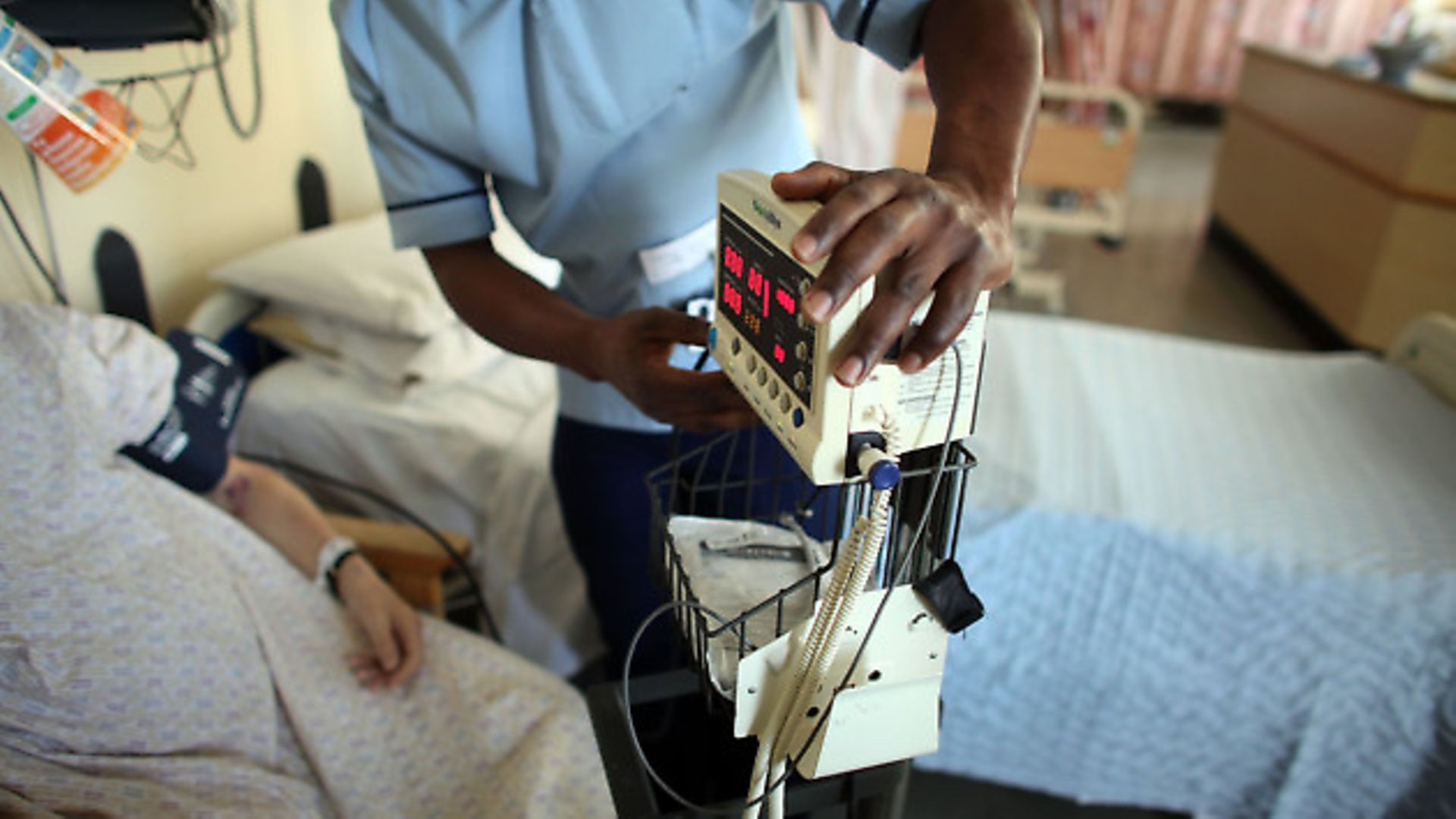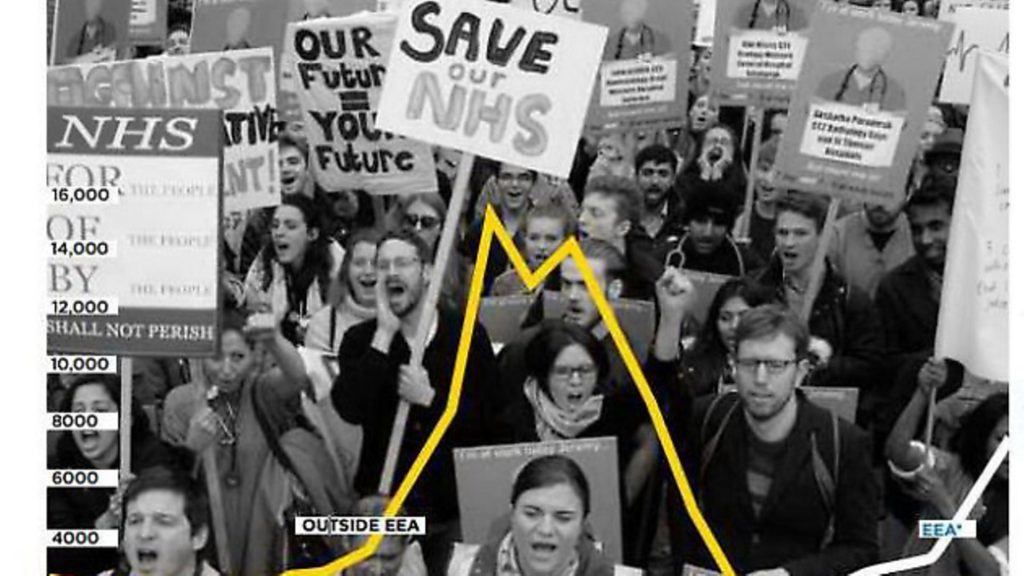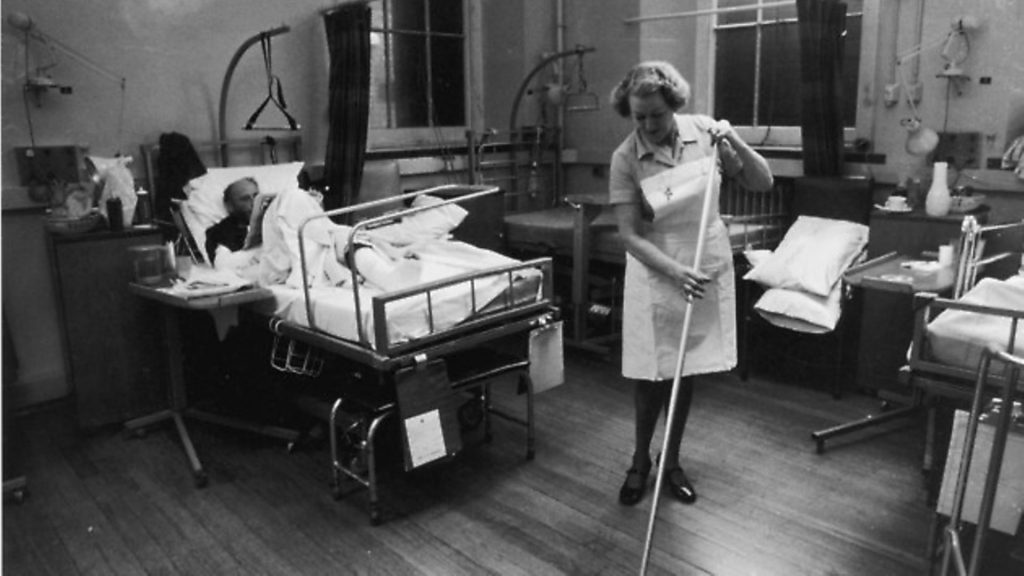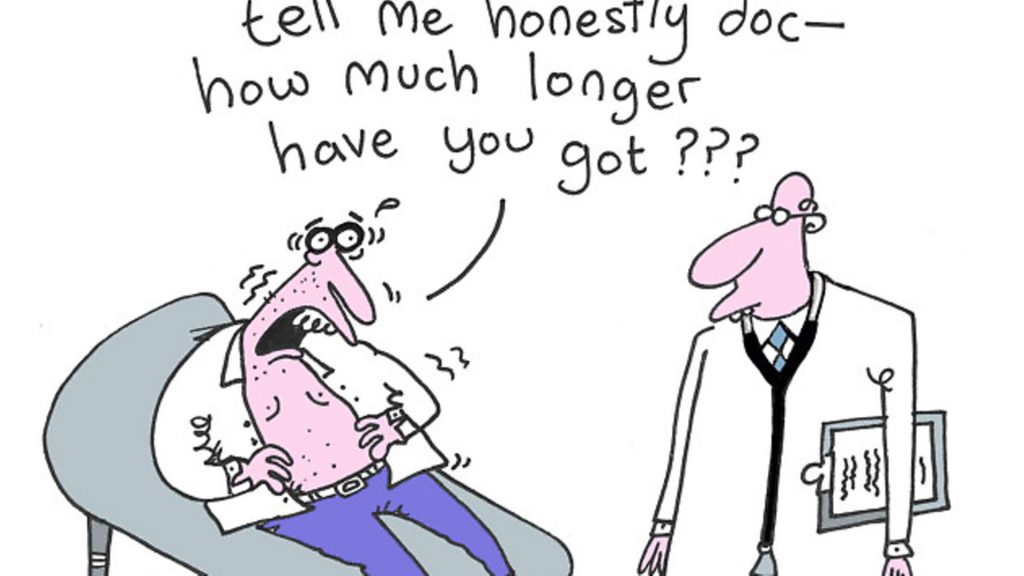
If you want to know what’s going wrong in the NHS don’t listen to MPs, just follow the money

and Midwifery Council data provided to the Royal College of Nurses – Credit: Archant
Emergency services at breaking point, huge financial deficits, soaring waiting times, and a demoralised workforce. Even government ministers are starting to admit it – the NHS is in a mess.
There are many causes of the current crisis, but essentially it boils down to the rising gap between the funding on offer and the amount of work the service has to carry out.
During the current decade the NHS has received real terms funding increases of around 1%, which is of course a far more generous settlement than that offered to most other government departments, but far less than the historic annual increases of around 4%.
On one level this sounds pretty reasonable. The belt has been wrenched painfully tight around other departments, so surely the health service should have to tighten up by a belt-hole or two?
The problem is that the costs of ever-advancing treatments that the NHS must provide have spiralled, while demand for services has done the same – driven largely by a more elderly population with multiple complex health problems.
The NHS Constitution and the principles on which it’s built mean people can’t just be waved away. Hospitals cannot easily be shut down, as councils have shut down libraries. The patients must be seen and treated, and hospitals must at least attempt to adhere to a multitude of national standards and targets in the process.
So inevitably, after several years of minimal funding increases, which felt like swingeing cuts amid the rapidly rising demand and costs, a huge structural deficit developed within the majority of local NHS trusts.

Around two-thirds of 238 local providers ended 2015-16 in the red, with their combined underlying deficit reaching £3.7bn, against a budget of £75bn.
This level of overspending is clearly unsustainable and has resulted in the Treasury taking control of the purse strings. When it comes to NHS finance, HMT now calls the shots.
Arguments as to how we resolve the problem are unlikely to be settled any time soon. But health economists generally agree that more money is needed – well beyond what the government has pledged.
At 7.4%, England spends at least 1% less on health care as a proportion of GDP than most of the EU countries considered our direct peers, such as Germany and France, so can probably afford to be far more generous.
Even the Office of Budget Responsibility has projected the proportion will need to rise to around 8.8% over the next decade in order to meet the rising demand and costs. This would equate to annual funding increases of around 3.5% (£2.7bn).
But for now at least, Theresa May and Philip Hammond will continue trotting out their line that the NHS has got ‘more than it asked for’ (we’ll come back to that later) and must focus on delivering its £22bn efficiency plan set out by NHS England chief executive Simon Stevens.
So while it waits, the NHS must do whatever it can to get its own side of the house in order – starting with workforce planning, which has been woeful over the last decade.

Many hospitals were busy shedding staff in the late 2000s, in order to satisfy regulators that they could command their finances and take the tough decisions that would justify greater sovereignty and freedom from Whitehall.
But this changed after the incoming coalition government agreed to commission a public inquiry into the Mid-Staffs hospital scandal (I do wonder whether it would have been so willing had the failings happened under a Conservative government and not Labour).
Clinical staff shortages were subsequently identified as a major problem, not just at Mid-Staffs but across the NHS, so newly-designed minimum nurse staffing ratios were introduced to ensure the ward rotas had adequate numbers.
The trouble was, the NHS did not have enough nurses in the pipeline to fill all these roles, while thousands were opting to leave their permanent posts to do more lucrative and flexible agency work.
Shortages against the new minimum ratios meant clinical staff were in high demand, especially with a newly beefed-up inspection body charged with giving every trust an Ofsted-style rating.
The high demand left the staffing agencies free to ramp up the costs of supplying temporary nurses, which in turn encouraged even more to leave the NHS as they realised that higher wages were on offer.
The same was happening with doctors – as the supply line slowed and demand increased – many realised they could work as medical locums with less responsibility and the ability to charge premium rates.

Meanwhile, the supply of student nurses in England was hindered by the bursary system, which limited the number of training places when demand was far greater. Counter-intuitively, the bursary is now being scrapped in order to increase the number of places.
The lack of home-grown nurses has forced almost every NHS trust to launch urgent oversees recruitment drives to plug the rota gaps. India and the Philippines are the NHS’s two largest providers of overseas staff, but recruitment after Mid-Staffs focussed heavily on EU countries such as Ireland, Spain, Portugal, Poland and Italy, largely because free movement made the process far more straightforward.
EU countries currently account for about 55,000 health service staff, about 5% of the total, and NHS system leaders dare not think about potential consequences that Brexit could have.
Even if cohorts of NHS staff are placed on the shortage list with the Home Office, this will still create added layers of bureaucracy within recruitment pipelines which local leaders could well do without. Recruiting outside the EU is currently a far more lengthy and burdensome process because of the visa requirements.
A more worrying possibility is whether EU staff who are already here will choose to leave, due to a more unwelcoming climate and their uncertain status.
The NHS will be heavily reliant on these staff for many years yet. But if significant numbers start to leave, then we can forget about ending the staffing agencies’ bonanza, which reached its peak in 2015-16 when the total bill reached around £3.7bn. The fact this figure matches the trust deficit is coincidental, but the agency spend was still a major driver of the bottom line problem.
Hourly pay caps are now in force to try and cut down on agency costs. Regulators reckon the agency bill will reduce by around £600m in 2016-17, although it’s not clear whether the savings are the result of staff returning to substantive roles, as the Department of Health would like, or whether trusts are now just playing the dangerous game of leaving wards understaffed.
It’s likely that the latter is happening in some places, and it’s anyone’s guess as to what the longer term costs of this could be in terms of staff morale or the frequency of tragic mistakes that will lead to costly compensation pay-outs.
And ultimately, there is only so much that tinkering at the margins with the pay caps and student numbers can achieve, while a deep-lying unease and stress appears to be growing within the existing workforce.
Just look at the junior doctors’ dispute last year, which was essentially a dispute over pay, but which gathered serious support and momentum due to the huge levels of concern about the general working conditions and levels of service they are able to provide. With the finances set to get even tighter over the next three to four years it isn’t going to get easier any time soon.
So far, the government’s response to the crisis is to support organisations and leaders who have somehow managed to keep the finances on track; the Treasury now holds back significant pots of funding and offers it only to those organisations which can meet their financial targets.
I’m not sure kicking those who are already down will achieve very much, though, and the policy risks creating an even bigger gap between those who can hit the numbers and those who can’t.
What the NHS really needs is targeted investment in new care models and systems which reduce the demand on expensive hospital care. Preventing disease before it happens, helping patients to self-treat, rolling out the use of technology so patients can be monitored remotely, and beefing up community services to stop patients popping up at A&E.
Yet many of the policies in play at the moment are working in the opposite direction.
The most misleading part of the government’s claim that the NHS got ‘more than it asked for’ – which has been pretty thoroughly debunked by Stevens and others – involves the sneaky redefinition of the ring-fence around NHS spending.
The ring-fence had always previously referred to the entire Department of Health budget, but in 2015 the Treasury quietly narrowed the definition to only include NHS England’s budget (about 87% of the total), and proceeded to make 20% cuts to the other ‘health’ budgets.
Among these are budgets for public health and prevention services, which are crucial to reducing demand for hospital care and saving money in the longer term.
Cuts to social care budgets, which were already outside the ring-fence and have been slashed over a longer period, are equally damaging and counter-productive. With private providers increasingly opting to quit the market these services are now at risk of total collapse in many areas, which threatens a disastrous further spike in NHS demand.
Meanwhile, investment funds for infrastructure and service transformation, crucial for redesigning services in a way that reduces pressure on hospitals, are being repeatedly raided to prop up day-to-day revenue budgets.
Delivering financial sustainability for the NHS by 2020-21, which was the whole point of Stevens’ five-year plan, was always going to be a challenge, but now it feels like a pipe dream.
The appetite for change is there locally, in a way that it probably wasn’t previously, but the service needs serious investment, time, and breathing space to deliver the changes that are needed.
Lawrence Dunhill is senior correspondent at the Health Service Journal









